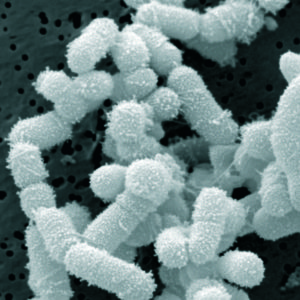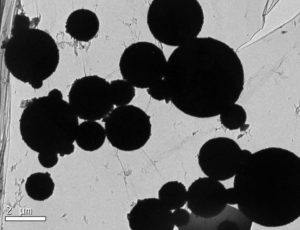 This is a thought-provoking study that looked at environmental quality and cancer incidence in counties throughout the US. The researchers found that the more polluted the county, the higher the cancer incidence. An increase in cancer rates was associated with poorer air quality and the "built environment" (such as major highways). They correctly point out that many things together can contribute to cancer occurring - and this is why looking at how polluted the air, water, etc. together is important.
This is a thought-provoking study that looked at environmental quality and cancer incidence in counties throughout the US. The researchers found that the more polluted the county, the higher the cancer incidence. An increase in cancer rates was associated with poorer air quality and the "built environment" (such as major highways). They correctly point out that many things together can contribute to cancer occurring - and this is why looking at how polluted the air, water, etc. together is important.
They looked at the most common causes of cancer death in both men (lung, prostate, and colorectal cancer), and women (lung, breast, and colorectal cancer). They found that prostate and breast cancer demonstrated the strongest associations with poor environmental quality. [Original study.]
The researchers point out that about half of cancers are thought to have a genetic component, but therefore the other half have environmental causes. Other studies already find that environmental exposures (e.g., pesticides, diesel exhaust) are linked to various cancers. But this study was an attempt to look at interactions of various things in the environment with rates of cancer - because we all are exposed to a number of things simultaneously wherever we live, not just to exposures to one thing. Thus this study looked at associations in rates of cancer.
Of course there is also a lifestyle contribution to many cancers that wasn't looked at here (nutrition, alcohol use, exercise). They also pointed out that many counties in the US are large and encompass both very polluted and non-polluted areas - and that those counties should be broken up into smaller geographic areas when studied. [More air pollution studies.] From Science Daily:
Poor overall environmental quality linked to elevated cancer rates
Nationwide, counties with the poorest quality across five domains -- air, water, land, the built environment and sociodemographic -- had the highest incidence of cancer, according to a new study published in the journal Cancer. Poor air quality and factors of the built environment -- such as the presence of major highways and the availability of public transit and housing -- -- were the most strongly associated with high cancer rates, while water quality and land pollution had no measurable effect.
Previous research has shown that genetics can be blamed for only about half of all cancers, suggesting that exposure to environmental toxins or socioeconomic factors may also play a role. "Most research has focused on single environmental factors like air pollution or toxins in water," said Jyotsna Jagai, research assistant professor of environmental and occupational health in the University of Illinois at Chicago School of Public Health and lead author of the study. "But these single factors don't paint a comprehensive picture of what a person is exposed to in their environment -- and may not be as helpful in predicting cancer risk, which is impacted by multiple factors including the air you breathe, the water you drink, the neighborhood you live in, and your exposure to myriad toxins, chemicals and pollutants."
To investigate the effects of overall environmental quality, the researchers looked at hundreds of variables, including air and water pollution, pesticide and radon levels, neighborhood safety, access to health services and healthy food, presence of heavily-trafficked highways and roads, and sociodemographic factors, such as poverty. Jagai and her colleagues used the U.S. EPA's Environmental Quality Index, a county-level measure incorporating more than 200 of these environmental variables and obtained cancer incidence rates from the National Cancer Institute's Surveillance, Epidemiology, and End Results Program State Cancer Profiles. Cancer data were available for 85 percent of the 3,142 U.S. counties.
The average age-adjusted rate for all types of cancer was 451 cases per 100,000 people. Counties with poor environmental quality had higher incidence of cancer -- on average, 39 more cases per 100,000 people -- than counties with high environmental quality. Increased rates were seen for both males and females, and prostate and breast cancer demonstrated the strongest association with poor environmental quality.
The researchers found that high levels of air pollution, poor quality in the built environment and high levels of sociodemographic risk factors were most strongly associated with increased cancer rates in men and women. The strongest associations were seen in urban areas, especially for the air and built environment domains. Breast and prostate cancer were most strongly associated with poor air quality.

 The research finding of so many baby foods with elevated arsenic levels (above the legal limit) in the European Union made me wonder about arsenic standards in baby cereals in the US. It turns out that the US has "parallel" standards to the European Union. The EU has "maximum 0.1 milligrams of arsenic per kilogram of rice" (this standard has been in place since January 2016), and in 2016 the US the FDA proposed a "maximum allowed standard of 100 ppb (parts per billion)" in infant rice cereal.
The research finding of so many baby foods with elevated arsenic levels (above the legal limit) in the European Union made me wonder about arsenic standards in baby cereals in the US. It turns out that the US has "parallel" standards to the European Union. The EU has "maximum 0.1 milligrams of arsenic per kilogram of rice" (this standard has been in place since January 2016), and in 2016 the US the FDA proposed a "maximum allowed standard of 100 ppb (parts per billion)" in infant rice cereal. Once again a study looked at biofilms in sinuses - but this time in the sinuses of healthy people and not those with sinusitis. Various different species of bacteria and small size "microcolonies" or biofilms were found in the healthy maxillary sinuses of all 30 people - so yes, it appears that the presence of biofilms in the sinuses is normal in healthy people. And yes, the presence of bacteria (even some low levels of species which are typically associated with sinusitis) are normally found in the sinuses of healthy people. (
Once again a study looked at biofilms in sinuses - but this time in the sinuses of healthy people and not those with sinusitis. Various different species of bacteria and small size "microcolonies" or biofilms were found in the healthy maxillary sinuses of all 30 people - so yes, it appears that the presence of biofilms in the sinuses is normal in healthy people. And yes, the presence of bacteria (even some low levels of species which are typically associated with sinusitis) are normally found in the sinuses of healthy people. (
 An article was just published in a research journal to discuss the fact that humans - in part due to
An article was just published in a research journal to discuss the fact that humans - in part due to  An interesting study looked at what the act of walking does to our brain, and found that it can modify and increase the amount of blood that’s sent to the brain (which is viewed as
An interesting study looked at what the act of walking does to our brain, and found that it can modify and increase the amount of blood that’s sent to the brain (which is viewed as  This post is more on the theme of nanoparticles and human health. My
This post is more on the theme of nanoparticles and human health. My  Image of magnetite nanoparticles from the exhaust plume of a diesel engine. Credit Maher et al study, 2016.
Image of magnetite nanoparticles from the exhaust plume of a diesel engine. Credit Maher et al study, 2016. A microscopic image shows magnetite nanoparticles in the human brain. Barbara Maher et al study, 2016.
A microscopic image shows magnetite nanoparticles in the human brain. Barbara Maher et al study, 2016.